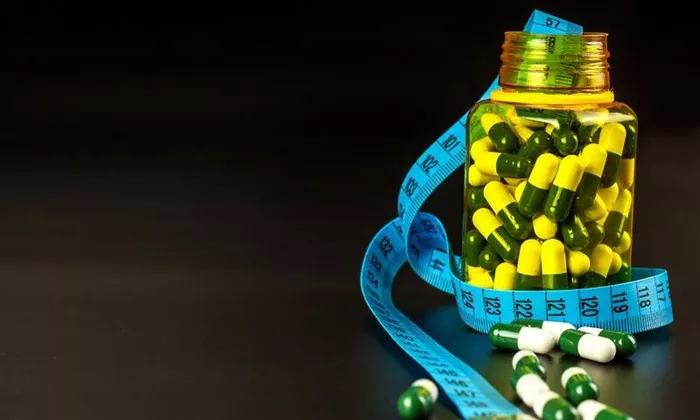Years ago, Robyn Munsch would walk through the grocery store, filling her cart with calorie-dense items like frozen pizza, cookies, and frosting. That all changed when she started taking Wegovy, a weight-loss drug. Since losing 85 pounds, Munsch no longer craves junk food.
“I don’t buy chips, sweets, or other junk foods anymore,” said Munsch, who now lives in Rochester. “It’s life-changing.”
Munsch’s experience is part of a larger trend that’s shaking up the food industry. More Americans are taking GLP-1 medications—drugs originally developed for diabetes but now widely used for weight loss. As people on drugs like Ozempic, Trulicity, and Wegovy consume fewer packaged foods, the food industry is starting to feel the effects.
A recent study by Cornell University and Numerator found that many categories of food—especially savory snacks, sweets, and refrigerated dough—are seeing significant declines in sales among GLP-1 users. The study’s authors warned that these changes could have long-lasting implications for the food industry as more people begin using GLP-1 drugs.
Despite the evidence, many food companies, from Hershey to Hormel, are downplaying the impact of GLP-1 medications on their sales. These companies have seen a decline in the volume of food sold in recent years, yet they argue the change is not primarily due to the drugs.
A separate report from PwC found that GLP-1 users spend 11% less on food. Similarly, analysts at Morgan Stanley predict that overall food sales will continue to decline over the next decade, even as the U.S. population grows.
Sally Lyons Wyatt, a chief consumer goods adviser at Circana, believes food companies are underestimating the impact of GLP-1 medications. “CEOs who aren’t considering this as part of their innovation strategy are missing out,” she said.
Carb Crunch
Earlier this year, Lyons Wyatt advised a food CEO to acknowledge the presence of Ozempic-friendly products in their portfolio when speaking with investors. The CEO had planned to deny any impact from GLP-1s. “I told them, ‘You will be impacted, and you need to address it,'” she recalled.
Even companies benefiting from the rise of GLP-1 use, like protein shake brands, aren’t entirely sure how the drugs are affecting sales. JP Morgan analyst Ken Goldman said it’s challenging to assess the exact impact of GLP-1 drugs on business.
Some large companies, like Nestlé and Conagra, have begun targeting GLP-1 users with specific products. General Mills, however, only recently announced plans to focus on this growing demographic. CEO Jeff Harmening shared at an industry conference in February that General Mills is now marketing Progresso soups and Nature Valley bars to people on GLP-1s.
Despite these efforts, General Mills still makes much of its revenue from carbohydrate-heavy products—foods that GLP-1 users are less likely to crave. Munsch, for example, said a box of cereal now lasts her two weeks, a stark contrast to her pre-GLP-1 days.
Harmening, however, maintains that General Mills hasn’t been negatively impacted by the rise of GLP-1 use. “I honestly think it’s a net benefit for General Mills,” he said. “Consumers, even those on GLP-1s, still want food that tastes good. They just want it in the right proportions.”
Changing Tastes
In Minnesota alone, doctors prescribed over 660,000 doses of drugs like Wegovy and Mounjaro last year, according to insurance claims data from PurpleLab. Many users report a shift in their cravings, now favoring lean proteins, fruits, and vegetables over junk food.
Lauren Irwin, a 30-year-old from Minneapolis, said she’s not as hungry anymore. “I tend to buy more natural foods, like frozen fruits and veggies, and lean meats,” she wrote. “When we eat out, I avoid greasy foods and opt for rice bowls with meat and vegetables.”
Nancy Feist, also from Minneapolis, said she still buys calorie-dense treats but that they last much longer. “I don’t have the ‘I can’t keep that food in my house because I’d binge on it’ mentality anymore,” she said.
However, some users report that they forget to eat or leave stores with empty carts because nothing looks appealing. Food executives have suggested that the trend may only last for the short term, with most users staying on GLP-1s for less than a year. Still, more people are beginning the medication each day.
A key question for the industry is whether people will revert to old eating habits once they stop taking the drugs. Research on this is limited, but some studies show that without exercise, users may regain the weight they lost.
Kimberly Antonsen, 49, has been off Ozempic for two years but has continued her GLP-1-inspired eating habits. “I haven’t gained much weight back, but I do have my sugar cravings again,” she said.
Opportunities and Challenges
Hormel Foods, which makes Jennie-O turkey, sees the growing popularity of GLP-1s as a chance to boost sales. “We’re in a great position to capitalize on this growing consumer market,” said John Ghingo, Hormel’s head of retail. “Poultry and fish are among the highest growth categories for GLP-1 users.”
However, many food companies are cautious about attributing their sales successes to the rise of GLP-1 drugs. Mondelez, the maker of Oreos, saw a 1% decline in sales last year, but its CEO has said the effect of GLP-1s is overstated.
Lyons Wyatt believes that while the rise of GLP-1 medications won’t bring down the food industry, it will force companies to adjust. “Indulgent products will survive,” she said. “But we’ll see a lot of reformulation.”
Tammy Mead, who runs a Facebook group for GLP-1 users with nearly 300,000 members, has noticed a shift towards protein-focused products. “This has become a niche in the food market,” Mead said, “but I’m concerned that these highly processed products aren’t sustainable for people who stop using the medication.”
As more consumers turn to GLP-1 drugs for weight loss, the food industry will need to adapt to this changing demand. Whether these changes are temporary or long-lasting remains to be seen.


